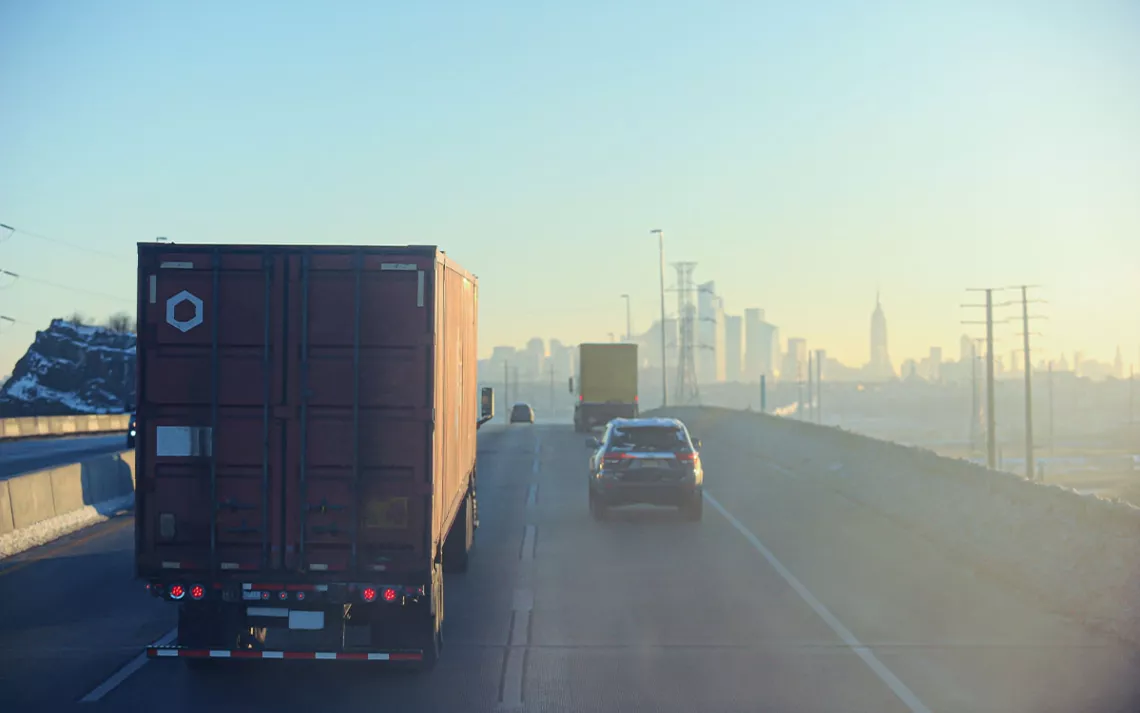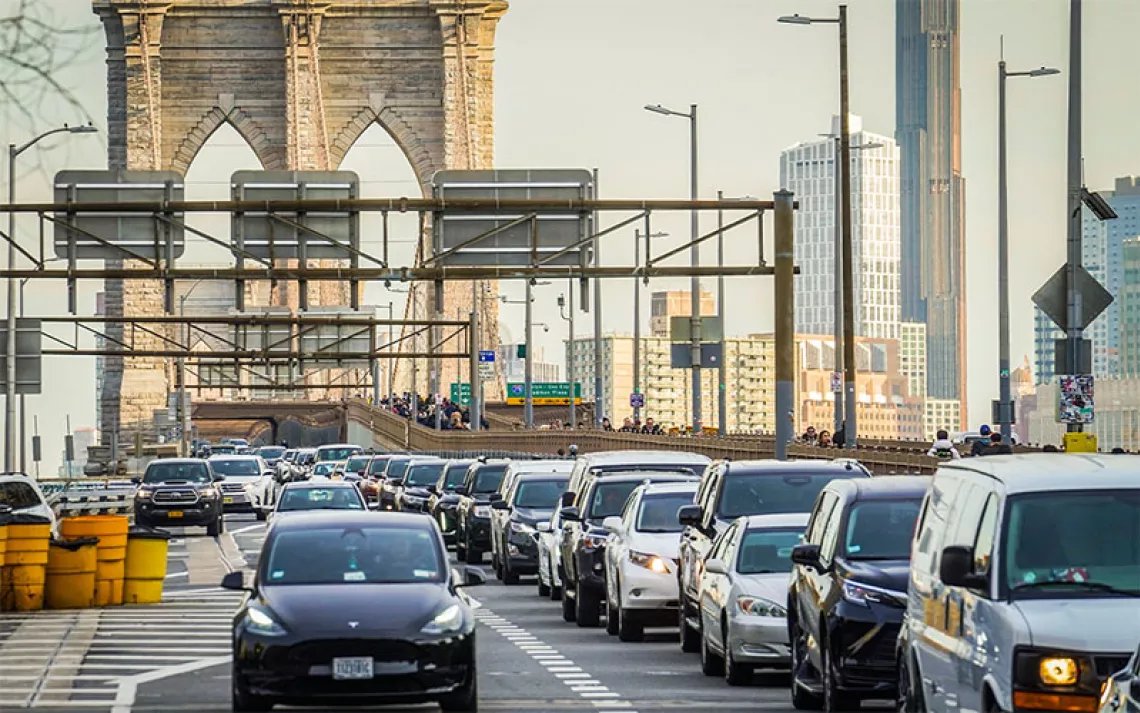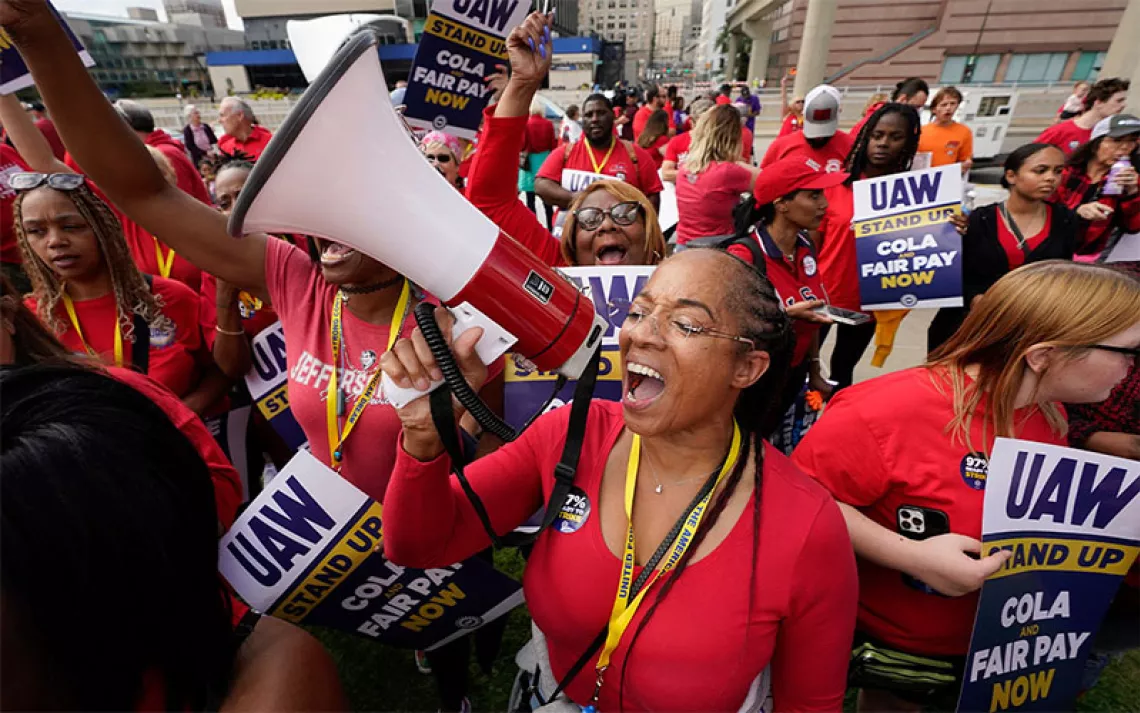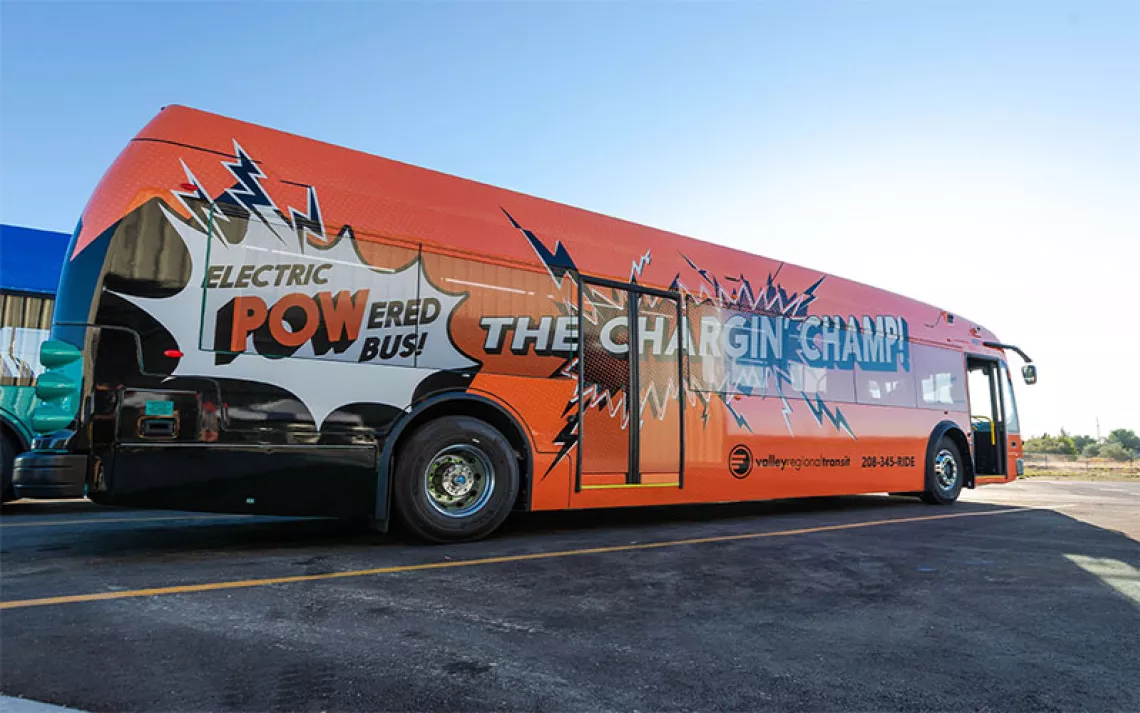Big Chance to Cut Climate Pollution From Big Trucks
We have an opportunity to tackle climate change and the public health costs of air pollution at once

Photo by Olga Kaya/iStock
Distributed by Trice Edney Newswire.
The interstates built in the 1950s and 1960s killed the vitality of the communities where people of color and the poor lived, from Overtown in Miami to the Hill District in Pittsburgh to the South and West Sides of Chicago. The disruption and segregation experienced by those communities happened by design.
The harm continues to this day for the residents who remain in those neighborhoods. Because the highways run through their backyards, those people are at point blank range for the pollution from the millions of vehicles driving the interstates burning fossil fuels—pollution like smog that is formed from nitrous oxide and volatile organic compounds. An estimated 72 million Americans live in close proximity to trucking routes, and they are disproportionately people of color or living with low incomes.
Transportation also accounts for more than a quarter of the climate-damaging gases this country makes, more than any other sector. Now we have an unprecedented chance to change this long-standing disregard for so many Americans’ health and well-being, and we must grab that chance if we want to reduce vehicle pollution enough to reach our goal of cutting carbon emissions in half by 2030.
While heavy-duty vehicles—think delivery trucks, garbage trucks, buses, and tractor trailers—are only 6 percent of the vehicles in the United States, they produce a third of the climate pollution from transportation. The Environmental Protection Agency has proposed new rules that would sharply reduce the carbon dioxide that heavy-duty vehicles will be allowed to belch in their exhaust and pave the way for more trucks and buses that have no emissions.
The comment period for these new rules ended Friday, so the EPA needs to finalize them quickly. As we saw last year with other commonsense air pollution standards for trucks that the EPA adopted, special interests and the politicians they support will oppose any regulations that have a chance to avert climate disaster. The EPA must stand up for communities most damaged by truck and bus pollution.
The stricter rules should add momentum to changes already happening in that part of the economy. Manufacturers like Daimler, Ford, Navistar, and Volvo have pledged to increase the number of zero-emission trucks they sell, and big volume shippers including Amazon, FedEx, and Walmart have said they will cut their air pollution.
The available models of zero-emission trucks are up more than a quarter from three years ago, and their cost is expected to drop by 40 percent in the next four years. Seventeen states, the District of Columbia, and Puerto Rico have agreed to a plan to boost zero-emission-truck sales with an initial target of 30 percent by 2030.
Beyond the new federal rules, we have extraordinary incentives that are part of the historic infrastructure and clean energy packages that President Biden and Congress approved over the last two years. The federal government has pledged to spend $1 billion by 2031 on zero-emission heavy-duty trucks and another $5 billion by 2026 on clean school buses. We must have the bigger stick of tougher regulation, but for the first time we have meaningful carrots from these incentives.
We’ve finally as a nation started to acknowledge the scope of the change it will take to preserve our fragile and already damaged planet. But the interest in the status quo is strong among those who gain from business-as-usual, like Big Oil companies reporting record billions in profits. We can’t turn our attention away now, assuming that recognizing the problem will undoubtedly lead to the right actions to address it.
Sixty years ago, neighborhoods in Manhattan, Washington, and New Orleans fought back successfully against being divided and paved over by interstates. Finishing the job of ending the pollution from those highways’ traffic will take that same commitment on our part.
 The Magazine of The Sierra Club
The Magazine of The Sierra Club







